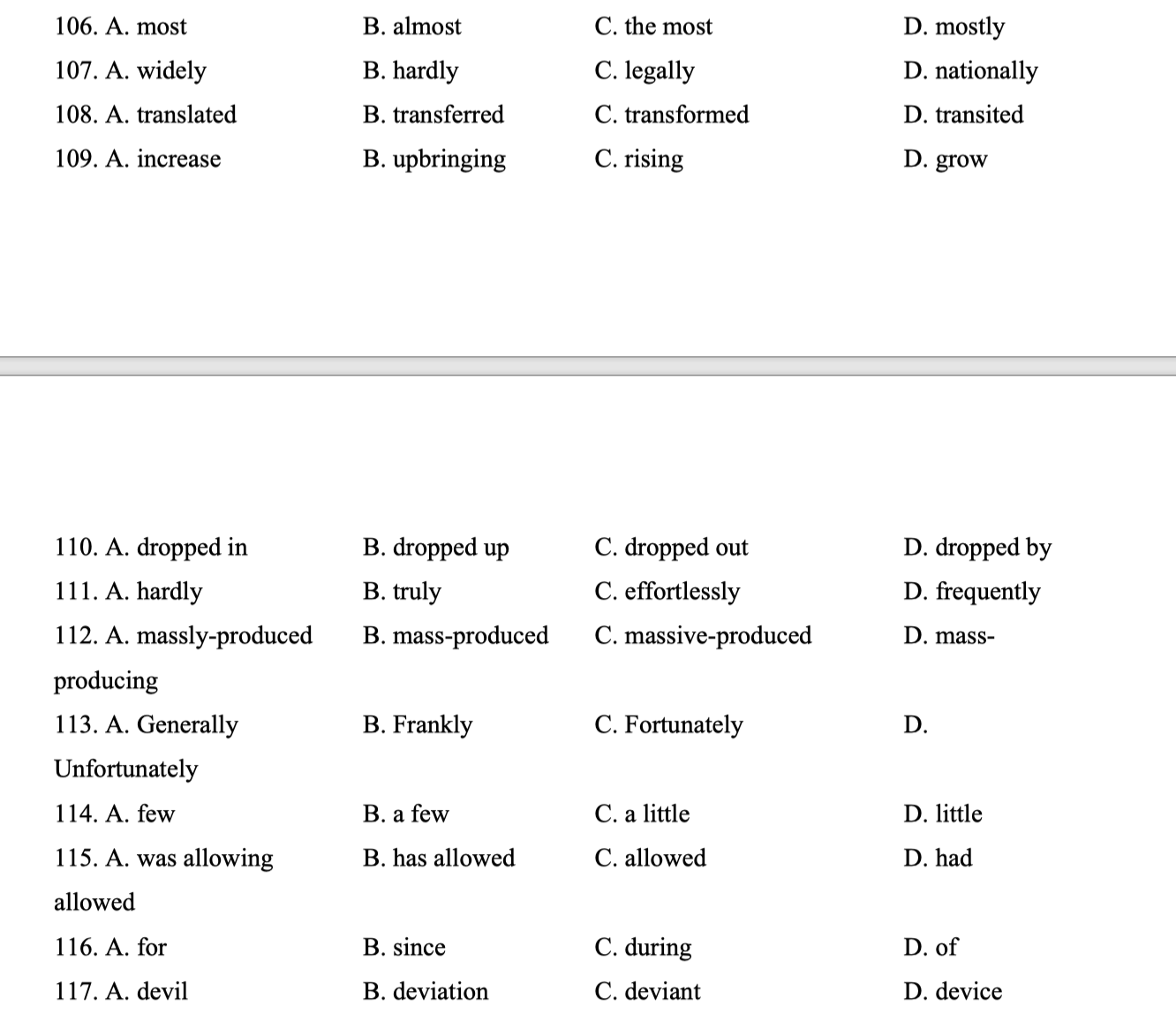IV. Read the passage and answer the questions below.
ENGLISH IS CONFUSING
“Good evening, everybody!” said the teacher, Donna. “Where is everybody?” That was sort of a daily joke by Donna. Usually the class started with only two or three students present, and then filled up as the minutes went by. It was summertime. Summer school was only eight weeks long. Class attendance was always smaller than during fall and spring semesters.
“I don’t know, teacher. Maybe they late or no come,” said one student. “Maybe watching TV football tonight.”
“Is there a soccer game tonight? It seems like there’s a soccer game every night. Oh, well. Let’s get started, okay? We’re on page 36 in the workbook. Tonight we’re studying participles as adjectives. Students are always confused when they learn about the present and past participles, so we will practice this a lot. Tonight, we’re just going to practice the present participle.
“The present participle tells us what emotion or feeling the subject is causing. For example, ‘Grammar is boring’ means that the subject – grammar – causes an emotion of boredom. If we say, ‘The movie is interesting,’ we are saying that the movie causes a feeling of interest. If we say, ‘The roller coaster is exciting,’ we are saying that the roller coaster causes a feeling of excitement. Any questions so far? Am I confusing you? Is everyone confused?”
The classroom was quiet. Donna looked at blank faces. They were confused. She knew this would take a while. But eventually, the faster students would grasp it, and then they would help the slower students. By the end of the evening, most of the class would feel comfortable using the present participle.
Donna erased the board and put some new examples on it. She loved guiding her students through difficult topics like this one. She always felt a little bit thrilled when the look of understanding came to their faces.
1. What was Donna’s daily joke?
.................................................................................
2. How many students were usually present when class started?
.................................................................................
3. Which season was it?
.................................................................................
4. How long did summer school last?
.................................................................................
5. What was always smaller in the summer?
.................................................................................
6. What were some absent students doing, perhaps?
.................................................................................
7. What was tonight’s subject?
.................................................................................
Xem chi tiết


1. What was Donna’s daily joke?
....⇒ “Good evening, everybody!” said the teacher, Donna. “Where is everybody?”.........
2. How many students were usually present when class started?
....⇒ Only two or three students present................
3. Which season was it?
.....⇒ It was summer.................
4. How long did summer school last?
...⇒ Summer school was only eight weeks long................
5. What was always smaller in the summer?
.....⇒ Class attendance was always smaller................
6. What were some absent students doing, perhaps?
....⇒ Maybe watching TV football tonight...........
7. What was tonight’s subject?
....⇒ It was English..........